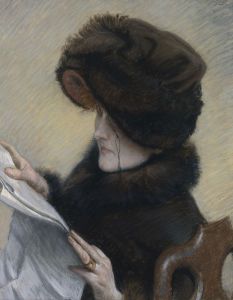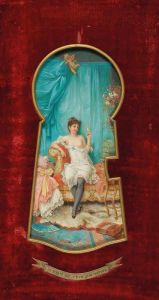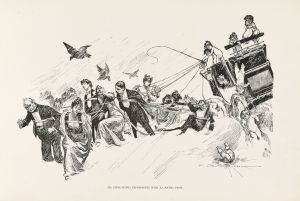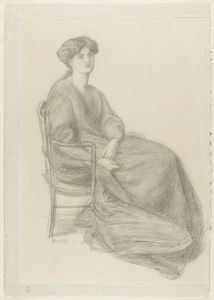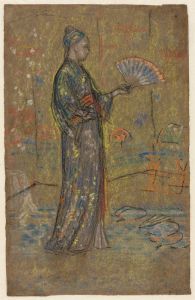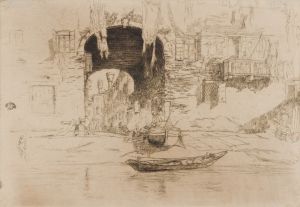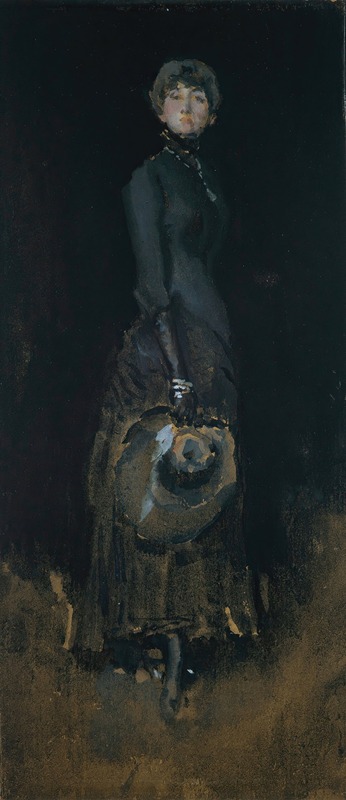
Lady in Gray
A hand-painted replica of James Abbott McNeill Whistler’s masterpiece Lady in Gray, meticulously crafted by professional artists to capture the true essence of the original. Each piece is created with museum-quality canvas and rare mineral pigments, carefully painted by experienced artists with delicate brushstrokes and rich, layered colors to perfectly recreate the texture of the original artwork. Unlike machine-printed reproductions, this hand-painted version brings the painting to life, infused with the artist’s emotions and skill in every stroke. Whether for personal collection or home decoration, it instantly elevates the artistic atmosphere of any space.
James Abbott McNeill Whistler was an influential American artist known for his contributions to the art world during the late 19th century. He is best remembered for his innovative approach to painting and his role in the Aesthetic Movement, which emphasized the importance of beauty and visual pleasure in art. One of his lesser-known works is "Lady in Gray," a painting that exemplifies Whistler's distinctive style and artistic philosophy.
"Lady in Gray" is a portrait that showcases Whistler's mastery of tonal harmony and subtle color palettes. Whistler often employed a limited color range in his paintings, focusing on the interplay of light and shadow to create mood and atmosphere. This approach is evident in "Lady in Gray," where the subdued tones and delicate brushwork highlight the sitter's elegance and poise. The painting reflects Whistler's belief in "art for art's sake," a principle that suggests art should be appreciated for its beauty and form rather than its narrative content or moral message.
Whistler's portraits often featured anonymous sitters, and "Lady in Gray" is no exception. The identity of the woman in the painting remains unknown, which is consistent with Whistler's tendency to focus on the aesthetic qualities of his subjects rather than their personal stories. This anonymity allows viewers to appreciate the painting purely for its visual elements, such as composition, color, and technique.
The composition of "Lady in Gray" is characterized by its simplicity and balance. Whistler was known for his ability to create harmony within his works, often using compositional techniques that drew inspiration from Japanese art, which he greatly admired. The influence of Japanese aesthetics can be seen in the painting's asymmetrical balance and the use of negative space, which contribute to its overall sense of tranquility and refinement.
Whistler's innovative approach to portraiture and his emphasis on tonal harmony had a significant impact on the art world, influencing both his contemporaries and future generations of artists. His work challenged traditional notions of portraiture, encouraging a shift towards more abstract and expressive forms of representation. "Lady in Gray" is a testament to Whistler's artistic vision and his ability to convey beauty through simplicity and subtlety.
While "Lady in Gray" may not be as widely recognized as some of Whistler's other works, such as "Arrangement in Grey and Black No. 1" (commonly known as "Whistler's Mother"), it remains an important example of his contribution to the development of modern art. The painting exemplifies Whistler's dedication to the aesthetic movement and his belief in the power of art to evoke emotion and contemplation through visual harmony.
In summary, "Lady in Gray" by James Abbott McNeill Whistler is a portrait that captures the essence of the artist's style and philosophy. Through its use of tonal harmony, subtle color palette, and balanced composition, the painting reflects Whistler's commitment to beauty and form. Although the identity of the sitter remains unknown, the work stands as a testament to Whistler's influence on the art world and his enduring legacy as a pioneer of modern art.





